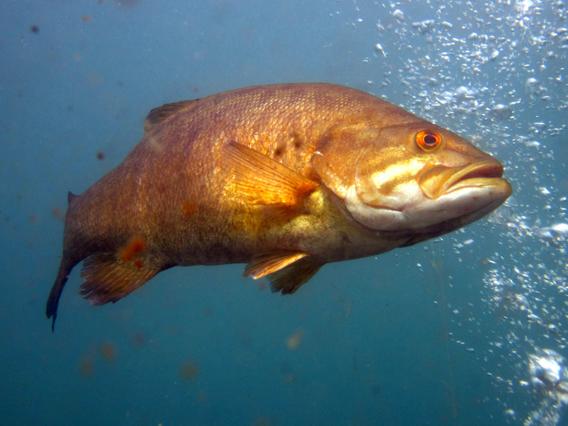
Managers balance multiple objectives to maintain priority fisheries and determine biomass availability for harvest in lakes.
Challenge: Complex interactions of temperature and fish production complicate the management of harvest opportunities.
Principal Investigator(s):
- Gretchen Hansen (University of Minnesota)
Co-Investigator(s):
- Craig Paukert (Missouri Cooperative Fish and Wildlife Research Unit)
- Jordan Read (USGS Data Science Branch)
- Olaf Jensen (University of Wisconsin-Madison)
Cooperator/Partner(s):
- Tyler Ahrenstorff (Minnesota Department of Natural Resources)
- James Bence (Michigan State University)
- David Bunnell (USGS Great Lakes Science Center)
- Zach Feiner (Wisconsin Department of Natural Resources)
- Abigail J Lynch (National CASC)
- Charles P Madenjian (USGS Great Lakes Science Center)
- Heidi Rantala (Minnesota Department of Natural Resources)
- Greg Sass (Wisconsin Department of Natural Resources)
- Tyler Wagner (Pennsylvania Cooperative Fish and Wildlife Research Unit)
- Joe Nohner (Michigan Department of Natural Resources)
Fisheries managers in Midwestern lakes and reservoirs are tasked with balancing multiple management objectives to help maintain healthy fish populations across a landscape of diverse lakes. As part of this, managers monitor fish growth and survival. Growth rates in particular are indicators of population health, and directly influence the effectiveness of regulations designed to protect spawning fish or to promote trophy fishing opportunities. Growth, combined with reproduction and survival, also determines the amount of fish biomass available for harvest, known as population production. Changing water temperatures can influence growth and production of managed fish species in multiple complex ways, increasing the opportunity for harvest in certain locations and decreasing it in others.
In this project, researchers will quantify how climate change influences growth and productivity of priority fish species in lakes and reservoirs throughout the Midwest. This information will enable managers to adapt management objectives to take advantage of increased growth and harvest potential in certain places, while implementing protective actions where climate change is likely to have negative effects. Such work is particularly important given that climate change impacts on fish populations are often indirect, influencing species interactions, growth rates, and recruitment in ways that are often counterintuitive and vary across the landscape. This study builds upon previous advances in lake temperature modeling and ongoing work to estimate water temperature and its effects on managed fish abundance in upper Midwestern lakes by expanding the work to southern Midwestern reservoirs, and by partnering with fishery managers in Minnesota, Wisconsin, Iowa, Missouri, and the Laurentian Great Lakes to link changes in lake temperatures to key management metrics related to fish size and harvest.
Read more from the CASC Project Explorer.
Related Publications
- Daily surface temperatures for 185,549 lakes in the conterminous United States estimated using deep learning (1980–2020) Willard et al., 2022; Limnology and Oceanography Letters.
- It’s complicated and it depends: A review of the effects of ecosystem changes on Walleye and Yellow Perch Populations in North America Hansen et al., 2022; North American Journal of Fisheries Management
Project Data
-
Daily surface temperature predictions for 185,549 U.S. lakes with associated observations and meteorological conditions (1980-2020)
- data_release_metadata.xml Download
- lake_surface_temp_obs_preds.csv Download
- 03_predicted_temp_N24-40_W67-98.nc Download
- 02_predicted_temp_N40-53_W67-98.nc Download
- 01_predicted_temp_N24-53_W98-126.nc Download
- lake_metadata.csv Download
- 03_weather_N24-40_W67-98.nc Download
- 02_weather_N40-53_W67-98.nc Download
- 01_weather_N24-53_W98-126.nc Download
-
Data release: Process-based predictions of lake water temperature in the Midwest US
- 00_parent.xml Download
